Search engines remain one of the biggest sources of traffic for local business owners.
With over 85% of market share, Google is the king of search engines, meaning, your business should be seen on Google to attract the most relevant local traffic.
Businesses that aren’t optimized for local search actually miss out on 80% of potential customers.
“Near me” searches have increased more than 500% in the past couple of years, and around 78% of local mobile searches result in an in-store purchase.
There is no doubt that you need to rank your website higher in the local search results of Google to get more customers. To make this happen, you need to apply a set of local SEO strategies. This guide to local SEO covers every aspect of it. Bookmark this guide and use it every time you need to pump up your local SEO.
Check out our complete guide to local marketing for more local marketing strategies.
What is Local SEO?
Local search engine optimization is a set of strategies applied to improve the presence of your business locally. In simpler terms, local SEO helps your business to rank higher organically on a number of relevant local searchers.
For example, if you are a bakery owner in Dothan, Alabama, and if someone is searching on Google with a keyword like “bakery in Dothan” then your bakery shop is visible to the searcher in a box displaying the top three local bakery shops in Dothan. This box is also known as the “Snack Pack” and hence local SEO is also known as the “Snack Pack SEO”.
The snack pack displays the top three most relevant local business listings, depending on the search query entered by the searcher.
The Top 3 Factors That Determines Local Ranking
Relevance, Distance, and Prominence are the top three factors that determine local ranking.
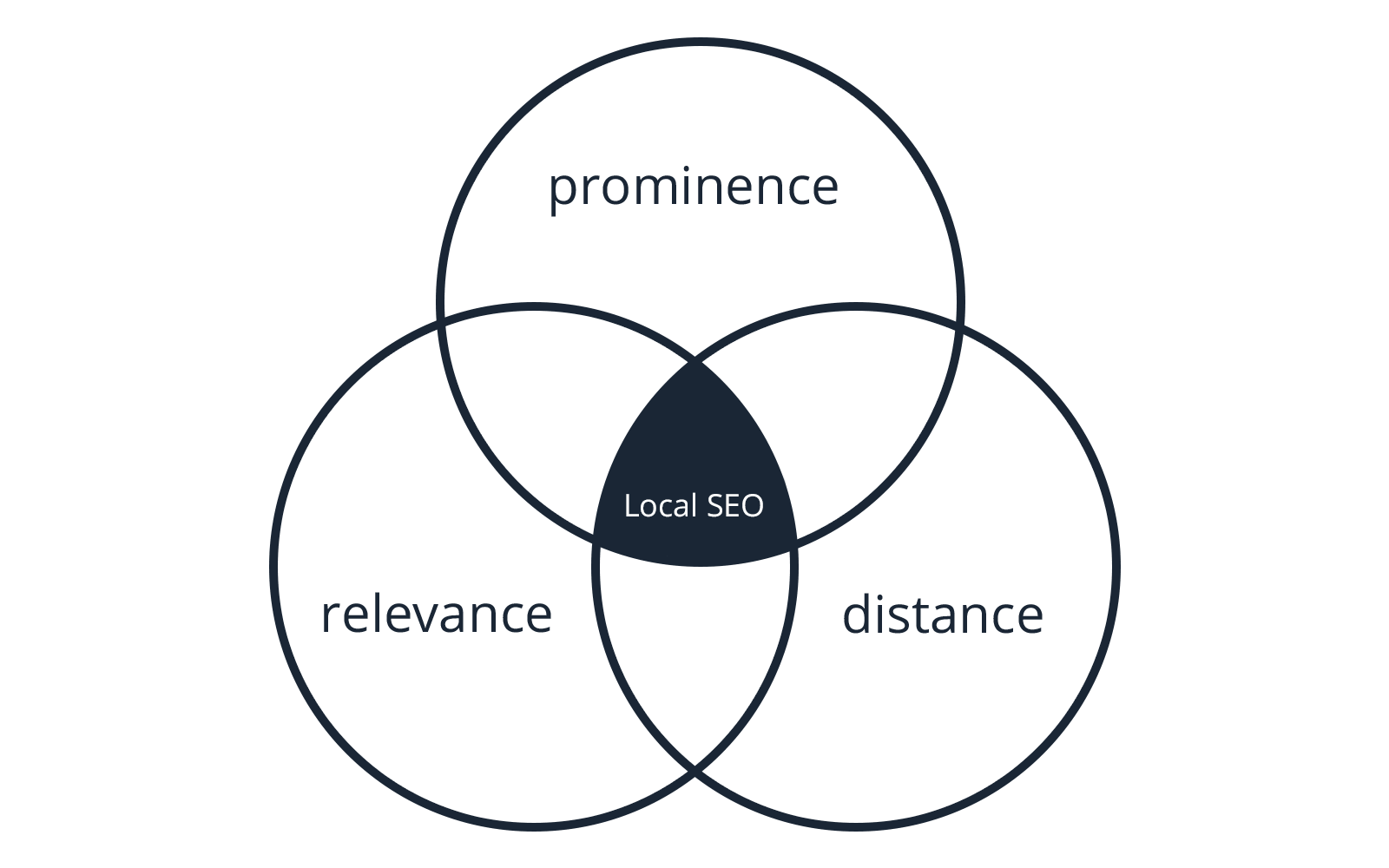
- Relevance refers to how well your Google My Business listing matches the intent of the searcher. Your business name, business category, description, business hours all play a significant role in determining the overall relevance of your business with respect to the search query entered by the searcher.
- Distance refers to how far your business is from the location of the searcher. If you have branches in every location that your business wants to target, then you can drastically increase your chances of ranking locally.
- Prominence refers to how well-known a business is. Google takes into account the popularity of the business. This is decided on the basis of citations, links, reviews, and positive ratings.
Now, that you have understood the top three factors that affect local SEO, let’s get started with applying the local SEO strategies:
Step 1- Claim and Optimize Your Google My Business Listing
First and foremost, you need a business profile to showcase your products and services in the local search results.
You can create a new Google My Business listing for your business in case you don’t have it or claim your business listing if it’s already been created.
Claiming a Google My Business Listing will help you to increase your chances of showing up in the local search results. It also offers you the opportunity to show up in the Knowledge Graph when someone searches for your business using your business name.
Once you have created or claimed your listing, optimize it for accuracy and for achieving the top 3 rankings in the local snack pack. Here are some tips that help:
Make sure your NAP (Name, Address, and Phone Number) is accurate. (Please note that anyone can make changes to your GMB (Google My Business) Listing, so it’s a good practice to check back often and correct any inaccurate suggestions made by the people).
Include a local phone number in your listing instead of a call center number because this helps to increase the local relevance of your business.
Add an accurate category, use a user-friendly description, and choose attributes that accurately describe your business.

- Upload a high-quality profile photo, add a cover photo to enhance the presence of your profile. You can also add a video to tell the story of your business and improve engagement.
*Verify your business locations and keep your business hours accurate. - Promote your business profile locally and ask people to leave reviews. Make sure to check the reviews left by your customers regularly and respond to negative reviews politely.
- Ensure to provide a high-quality service to your customers so that they leave positive reviews because a high number of positive reviews left by your customers play a crucial role in boosting the local rankings of your GMB profile.
Step 2- Build Citations
A citation is a reference about your business, which may or may not contain a hyperlink.
The higher the number of citations (with accurate NAP) a business has, the greater are the chances of it ranking higher in the local search results. Please remember that citation is not the only ranking factor but is one of the factors of local rankings.
Here are some of the sites (apart from Google My Business) from where you should get a local citation for your business:
- Bing Places For Business
- Yahoo Local Business Listings
- Yelp
- Local.com
- Superpages
- Apple Maps
- Foursquare
- Localeze
- City Search
- Yellowbook
- Kudzu
- Hotfrog
- BOTW
- Spoke
Step 3- Earn Local Backlinks
Link is the most important ranking factor that Google considers before ranking any website.
When searching for opportunities for local links, try to acquire links:
- From sources that are locally relevant to the business you serve.
- That helps to pass quality referral traffic to your site.
- From the local Chamber of Commerce, Universities, Clubs that already hold a high reputation.
Now, the biggest question is – why will they link to you? Well, you need to apply specific strategies to pull the odds in your favor.
Here are some of the best ways to acquire local links and make your site super relevant in the eyes of Google.
- Offer scholarships to students of local universities to get in the news. Casey Meraz was able to acquire links from reputed publications like the Wall Street Journal when he insisted his client to start a scholarship for Colorado University students who admit to drinking and driving.

- Launch an award for services that can become your clients in the future. For example, if you are a web design company, you can launch an award for the most promising startup of the year in your local area.
- Add a section on your website that speaks to the interests of the local community. Promote the content you publish on that section via Facebook ads. The process is easy and will require less effort. Links you will earn this way will be completely natural and can go a long way in boosting the organic presence of your site.
- Nominate your business for the local awards that are held each year in your community. If you can win a local business award, then this will add to the overall reputation of your company.
- Make your business eco-friendly (support green items) and get a link from organizations that promote green businesses.
- Build a tool and launch an email outreach campaign to spread the word. People are always looking for free tools that help to ease their problems. Tools have a high rate of acquiring lots of natural links.
- Conduct interviews of local influencers and publish it on your site. Influencers are more likely to link back to the site which publishes their interview. Always prepare content that benefits your audience.
- Use the reverse image tactic to build 26% more links to your site. Under this strategy, you should find sites that use your images by conducting image searches on Google. Shortlist sites that use your image but do not link to your site. You can then conduct an email outreach campaign to reach out to them and ask for an image attribution. This strategy works.

- Write an article about 6-7 local businesses in your area and promote your article in your social channels. Reach out to the businesses and inform them about your article. Chances are, they will naturally link to your article because every business wants to highlight a positive recommendation about their business.
Follow our guide to learn more about getting backlinks.
Step 4- Earn ‘Honest’ Reviews and Ratings
The Google local rankings survey proved that reviews accounted for 15.44% of how Google ranked a business.
Not just earning reviews but responding to both positive and negative reviews can help you improve your positioning in the local search results.
In the words of Google, “Responding to reviews shows that you value your customers and the feedback that they leave about your business. High-quality, positive reviews from your customers will improve your business’s visibility and increase the likelihood that a potential customer will visit your location.”
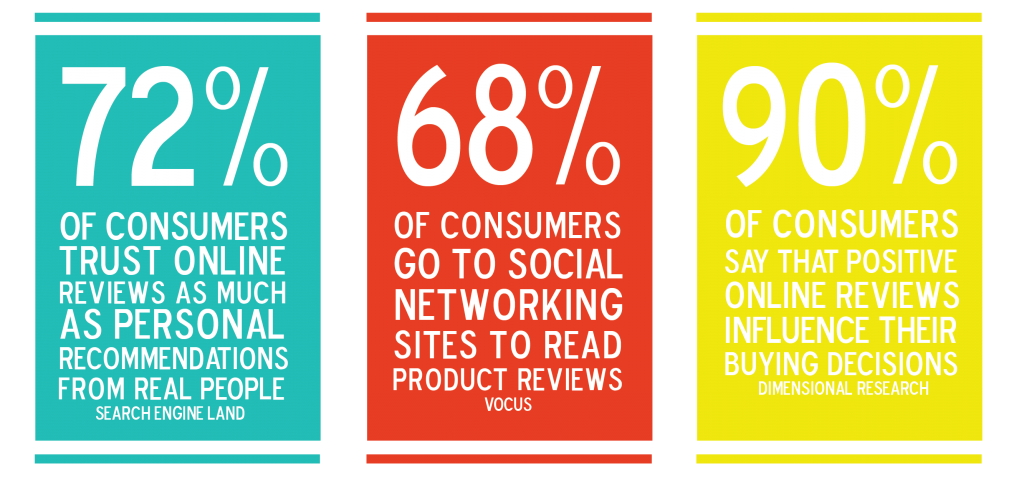
Here are some ways to earn honest reviews and rank higher in the local search results:
- Ask your customers to leave a review of your products and the products you are selling.
- Make it easier for your customers to leave a review and offer incentives to them.
- Ask for reviews at the right moment and take the help of email marketing for it.
- Host events and seminars to connect with prospects and encourage them to spread the word about your business.
- Respond to both positive and negative reviews politely. Help the customers in every possible way.
Step 5- Launch a Local Email Marketing Strategy
Email marketing is one of the best ways to boost your local SEO because it helps to drive qualified traffic to your website and improves customer engagement metrics.
Both time on site and bounce rate correlate with rankings as per a study by SimilarWeb. Sending targeted emails to your customers improves bounce rate, increases time on page, increases site visits, and signals to Google that your site is popular.
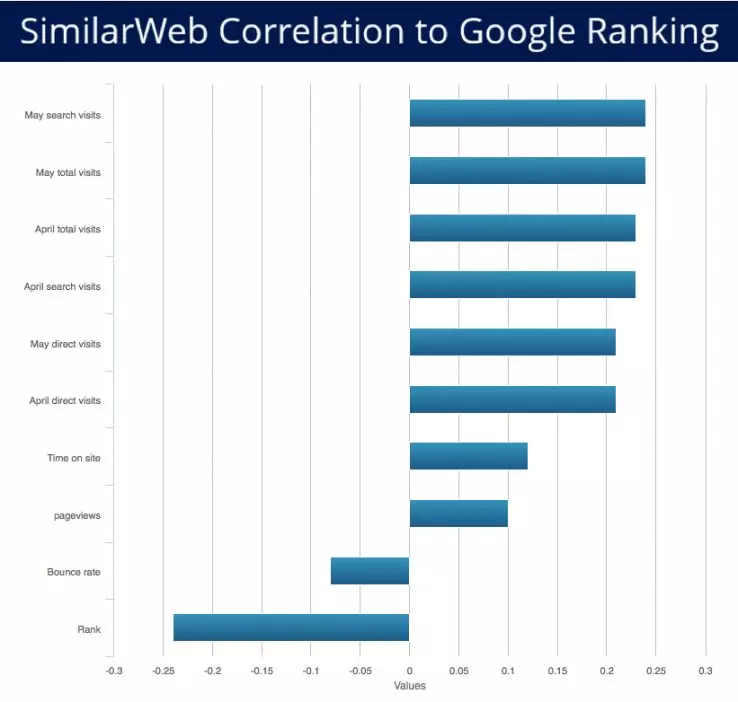
Follow the below guidelines when launching your local email marketing strategy:
- Make sure your emails are free from spam: Internet safety is becoming a concern for users, who are resorting to different tools to keep their inboxes spam-free. So, it’s best to ask essential questions to your vendor to ensure email deliverability.
- Opt for dynamic content personalization: Create landing pages that replicates the message you sent in your emails. For example, an apparel retail brand can supercharge email marketing with dynamic landing page content personalization, using Duda’s personalization engine.
Here’s an example of how this type of personalization might work:
- Create an email campaign targeting four segmented cohorts of shoppers – girls (age 13-19), young adult women (20-29), adult women (30-40), and middle-aged women (41-50).
- You can easily set up four different email campaigns, with personalized subject lines and messaging to target four different groups of users.
- Then, create a single dynamic landing page, and use an age group UTM tag in the destination URL for each campaign’s links.
- Finally, use Duda’s personalization rules to display segment-specific content at relevant places on the landing page.
Dynamic content personalization aims to reduce time and also generates the highest conversions as compared to non-personalized campaigns.
Don’t just drive traffic but convert them into customers.
The more customers you have, the higher the chances of traffic. More traffic will lead to more conversions and improve the overall engagement rate on your site. Online grocery store Mercato.com sends an email to new subscribers, encouraging them to make their first purchase with a $10 discount. This is a great strategy to earn more customers via email.

Cover the entire customer journey and send emails to customers at every stage of the customer journey. Offer local content that adds immediate value to the life of your customers. Regular emails will allow you to stay on top of your customer’s mind resulting in higher overall engagement.
Step 6- Improve Your Internal Linking Structure
Both external and internal links are equally necessary for higher local rankings. The biggest advantage that internal links offer is that you have full control over the links.
Sometimes, you need to acquire the organic real estate of Google that goes beyond the local 3-pack. This is where internal linking helps.
Adding the right internal links on your site allows Google to understand the relevance and importance of every page on your site.
If you are running a business site that needs to rank on a variety of search queries for every location, you need local specific content on your site (explained in the seventh step below).
Optimizing your internal link structure will significantly help you increase the reputation and relevancy of such local specific inner pages.
Contextual links offer more value than footer or sidebar links. Try and add internal links to your important local pages contextually within your main content. You can add contextual links from product pages, blog pages, category pages, service pages, etc. You can also add links in sidebar or footer but make sure you have enough contextual links.
Topic cluster is also a great way to solidify your internal linking strategy. Under this model, you link to your main pillar content (the location pages) from cluster content (pages that are relevant to the pillar content but not directly compete with them). Such pages help to improve the overall relevance and importance of pillar content.
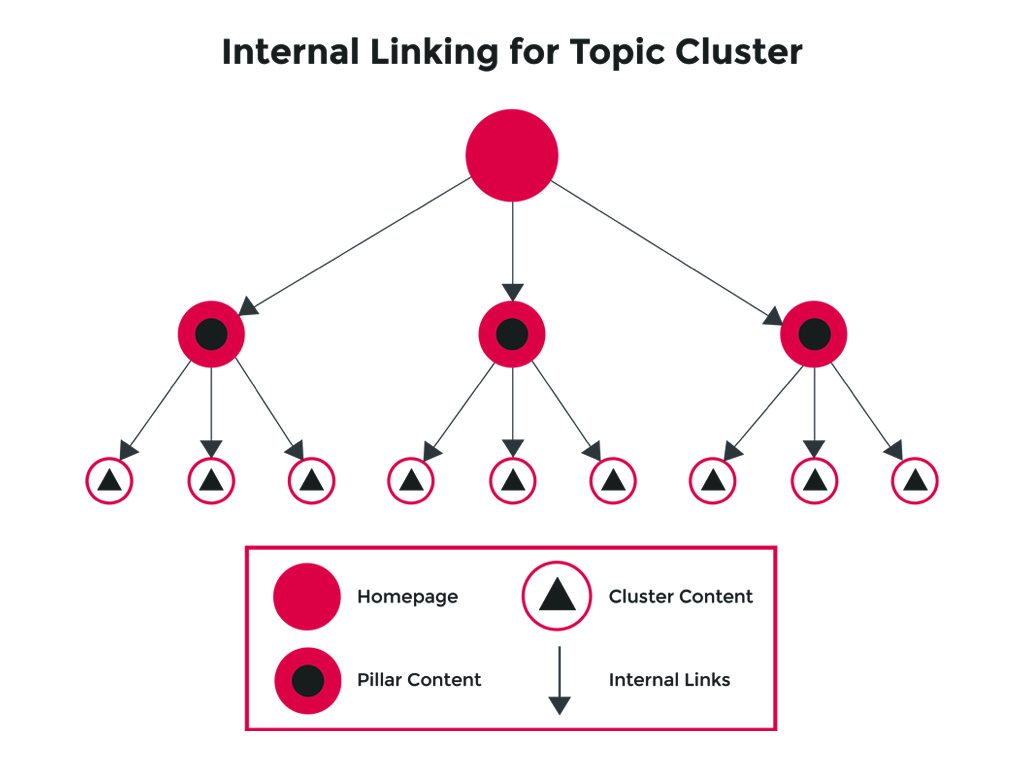
Step 7- Optimize Your Website For Voice Search
You can no longer ignore voice search. Research suggests that 50% of all searches will be voice search by 2020.
To compete with local businesses via local search, you need to follow the below strategies:
Optimize your site for Google Search Speech Guidelines.
Make sure your NAP is correct, and your business is listed on each of the directories suggested in this article. Voice assistants like Siri, Alexa, and Google Assistant fetch data from GMB, Apple Maps, Yelp, and Yext to answer the users.
Leverage the power of schema markup and featured snippets to rank for local search queries. Ranking as a featured snippet will increase your brand visibility leading to higher traffic and a greater number of natural links.
Prepare FAQ styled content or QA based content on your site. People often ask questions while doing voice search, and you will improve your chances of ranking higher if you create question-answer styled content.
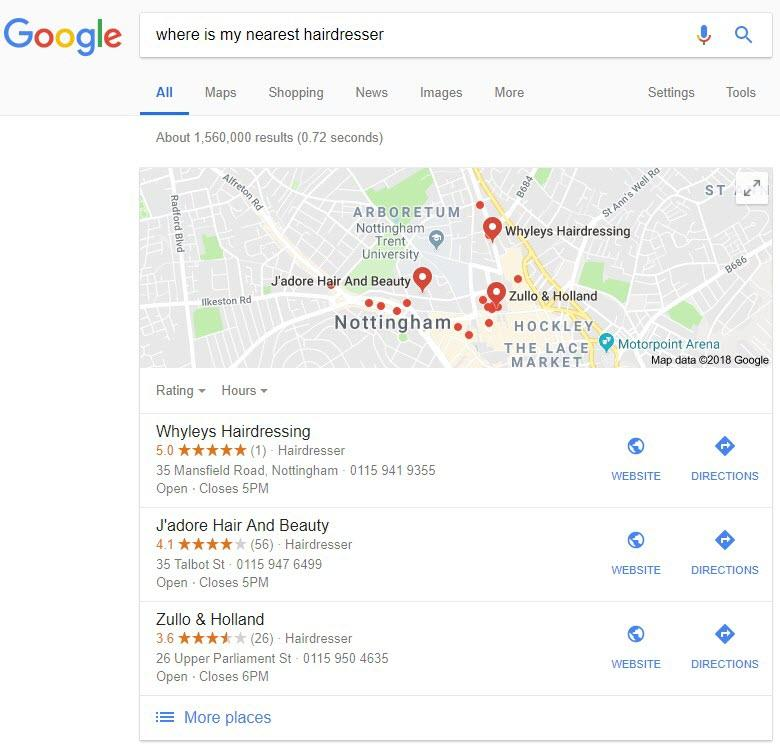
Step 8- Leverage Data Science And Add Location Pages To Your Website
Local SEO is all about targeting local audiences. You can create an audience persona to understand the intent and behavior of your target cohort.
Another way of understanding your audience is through data science. Hard to believe, but it’s true that 90% of the world’s data has been produced in the last two years, as documented by a Maryville University study.
Data science adds meaning to sets of data. You can add your data sources, identify your top-performing content in terms of engagement, identify top conversion paths, reveal hidden questions, spot common trends, and process large sets of data at scale.
Knowledge acquired via data science using tools like Google Analytics can help you reveal the topics that your audience is most interested. You can then create content pieces focussed around those topics.
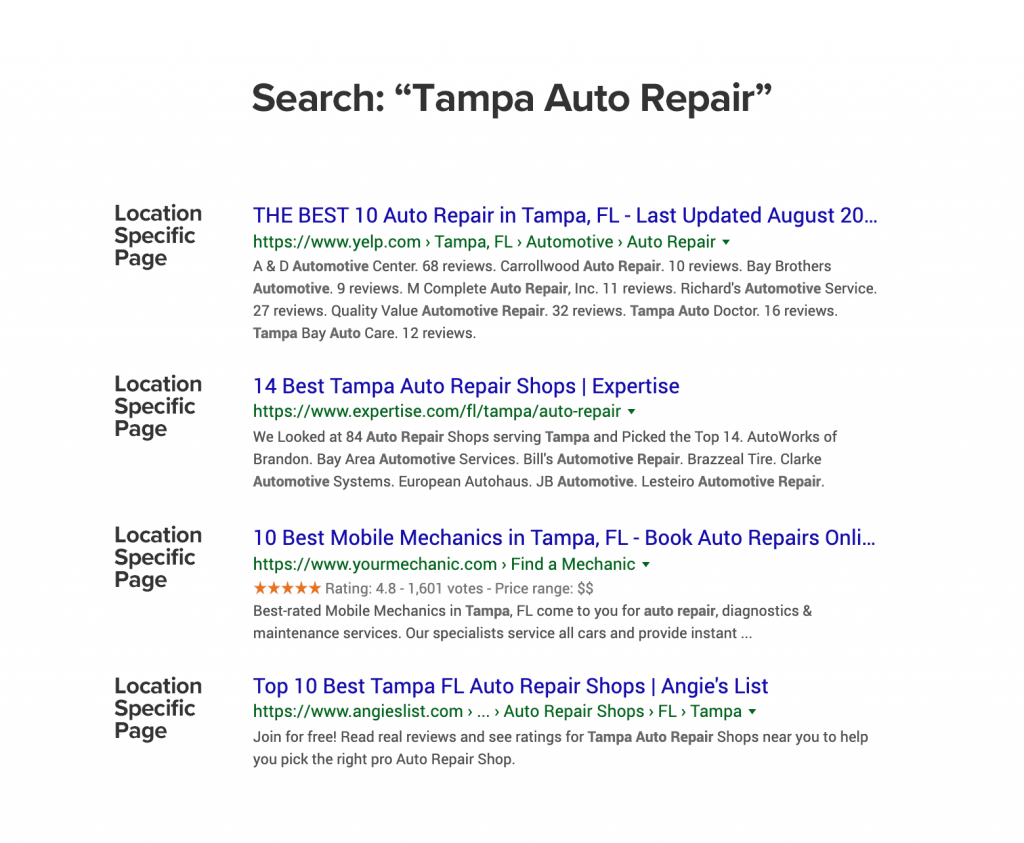
Create a dedicated landing page for every location you are targeting and make sure to add all your local contact details on every page. Optimize your landing pages for local user intent based on data science and improve the relevancy of your website.
Step 9- Leverage The Power of Local SEO Tools
SEO tools are a savior for optimizing your local SEO campaigns. You need to use the best tools to save time and maximize engagement. Here are the best local SEO tools you should use to power up your local SEO:
Mention.com – It lets you monitor the web and listen to what your audiences are saying about your business or your competitors. When you don’t miss important conversations, you can respond in time and strengthen your business visibility.
Whitespark Local Citation Finder – It is one of the best local SEO tools that let you identify all the essential citation sources for your business. You can enter the URL of your local competitor in the tool, and it will locate all the citations of your competitor. You can build new listings on sites where your business isn’t listed and increase your local rankings.
Schema Generator – This tool offers one of the easiest ways to add structured data markup to your site. Choose the type of markup you wish to add and place the code in thesection of your HTML page.
Moz Local – This tool helps you to have a consistent NAP across several web properties. You can delete duplicate listings, manage your reviews and ensure your business data is consistent across all the platforms.
Review Trackers – It is a powerful review software that lets you collect business reviews, monitor reviews, and respond to them on the go. It offers a single dashboard to manage reviews of every location of your business.
What’s Next?
Local SEO offers a higher return on investment, and you shouldn’t shy away from implementing strategies for higher local rankings. Follow the tips suggested in this article that lets you optimize your site for today’s search landscape.
Build a solid foundation for your business, help your customers, optimize your site, maintain your GMB listing, and earn positive reviews. Happy local SEO!
About the Author

Joydeep Bhattacharya is a digital marketing evangelist and author of the SEO blog, SEOSandwitch.com. He has over 9 years of experience in helping businesses make the most of online marketing. Content writing is his passion and he is a regular contributor on sites like SEMrush, Ahrefs, Search Engine Watch, Smartinsights, and others. You can reach him via LinkedIn.

